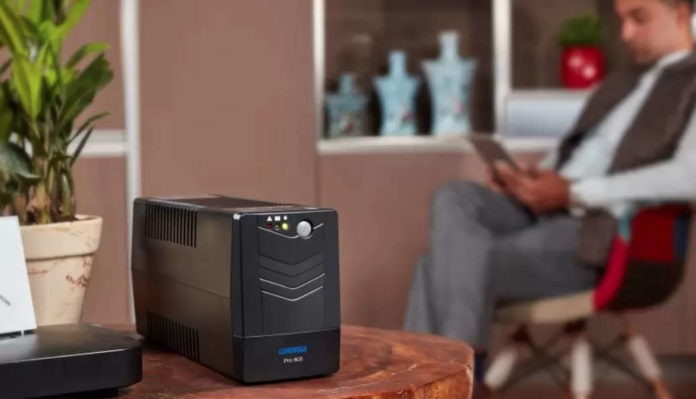Summer is here and with each passing day the mercury levels are soaring higher. And besides the mercury level, the demand for home UPS inverters is also on the rise. If you, too, are planning to buy a UPS inverter, but are unsure about how to select the right inverter for your home/office, here are a few important points that you must consider when buying a UPS inverter.
1. Power Requirement
The first and most important thing you need to know in order to buy an inverter is your power requirement. To calculate your power requirement, you first need to make a list of electrical appliances and fixtures you would require during a power cut.
Let’s say you need to run
3 Fans – 70 Watts each
3 Tube lights – 40 watts each
8 LED lights – 7 watts each
1 LED television – 70 watts each
1 Refrigerator – 140 Watt each
Total Power Requirement = (3*70)+(3*40)+(8*7)+(1*70)+(1*140)= 596 Watts
So your total load required in this case would be 596 Watts.
2. Inverter Capacity
Once you have determined the power requirement you need to find out the required inverter capacity.
Inverter Capacity is measured in VA (Volt Ampere). It is a measure of the output an inverter can deliver.
To calculate the inverter capacity all you need to do is divide the Power Requirement (that we calculated in Watts) by 0.7 (power factor of UPS inverter)
So in the above mentioned case 596 Watts = 596/0.7 = 851 VA
This means you would require an inverter with an output capacity of around 900 VA.
Note – It is advisable to buy an inverter with a higher VA rating so that you don’t have to buy a new inverter in case your power requirement increases in the future. Buying an inverter with a VA rating of 10-20% more than your existing requirement should suffice.
3. Battery Capacity
The next important thing to do is determine the battery capacity. The battery capacity is a measure of the charge a battery can hold. The unit of battery capacity is Ampere Hours. Usually, the batteries used in a residential setup range anywhere between 60 Ah – 220 Ah.
Now let us see how battery capacity is calculated.
The formula for calculating battery capacity is as follows.
Battery capacity = (power requirements in watts *backup-time*aging factor) / (battery voltage*battery efficiency*inverter efficiency)
Where
- Power Requirement = 596 watts (as calculated in the previous example)
- Let’s say back up hours = 2 hrs
- For lead acid battery, battery voltage = 12 V
- Inverter aging factor=1.25
- Battery efficiency=0.8
- Inverter efficiency = 0.8
On applying these values to the above mentioned formula
Battery capacity = ((596*2*1.25) / (12*0.8*0.8) = 194 Ah
Since a battery’s capacity would degrade with time, it is advisable to go for a battery with 5-10% higher capacity. So, in this scenario the required battery capacity would be around 200 Ah.
4. Type of Battery
There are two main types of batteries that you can choose from – Flat Plate and Tubular Batteries.
● Flat-Plate Batteries
If you are looking to buy a battery that’s light on the pocket, a flat-plate battery is a good option. It is a type of lead acid battery that has two flat plates. Since these batteries have a faster rate of charging they are apt for places that experience frequent power cuts. However, they come with smaller battery capacities as compared to tubular batteries, and therefore, they are not meant for areas that undergo longer durations of continuous power cuts.
● Tubular Batteries
They come in two sizes – short tubular and long tubular. Long tubular batteries are a little expensive but they have a higher battery capacity as compared to the short tubular batteries. Tubular batteries are also a type of lead acid battery. They are apt for areas that experience longer power cuts. The best thing about tubular batteries is that they require minimal maintenance and have a longer life expectancy.
Need Help?
If you want help in selecting the right UPS inverter for your home/office, you should check out Luminous’s “Power Consumption Calculator.” All you have to do is select the appliance you would require the power cut and enter the number of each appliance you would be using. The calculator will automatically calculate your power consumption and recommend you the right inverter VA rating and battery capacity for your home UPS inverter. And do you know what’s the best part? Not only does Luminous offer a wide range of inverter battery combos, but it also offers one of the most reasonable UPS inverter prices in the industry.








